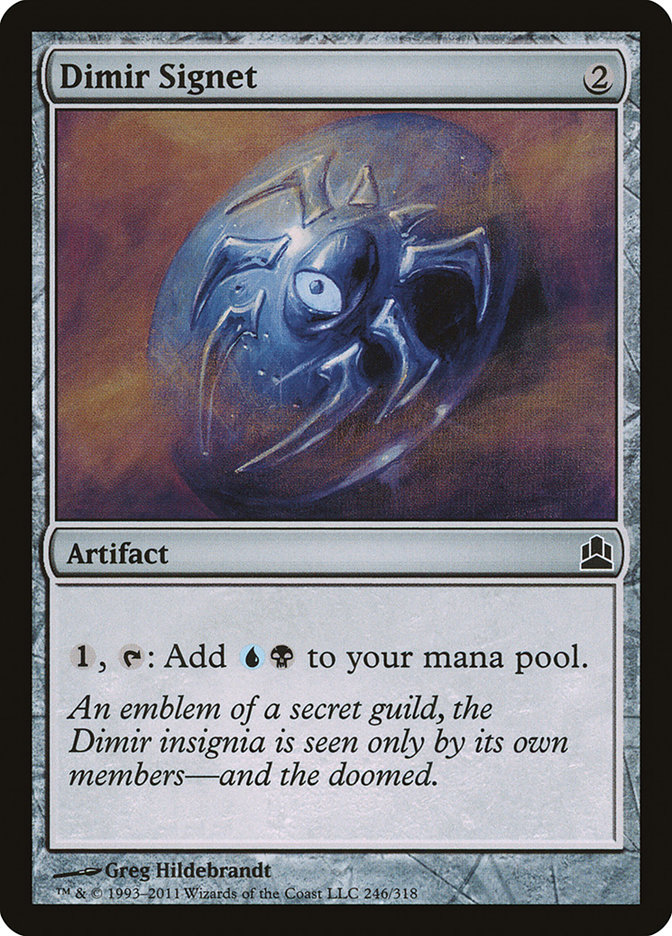Jim Davis – The Cube Compendium: Part 5
Author’s note: This is the fifth in a series of articles about both Cube in general and my own personal Cube. Thefirst article covered the basics of Cube design, while the second went into much further detail about my own Cube. The
following articles began the in-depth look at the Cube, withthe third focusing on the white and blue sections, and the fourth focusing on the black and red sections. Today we
tackle the green and multicolored sections.
Green – 50 Cards
Green is a fun and powerful Cube color, and is surprisingly deep and interesting. While often somewhat maligned over the years for being the ‘boring’ color
that just mana ramps and plays big, doofy creatures, green actually has quite the cache of very intriguing Cube cards.
From build-around-me cards like Oath of Druids, Eureka, and Survival of the Fittest to big time enablers like Heartbeat of Spring, Life from the Loam, and
Fastbood, green offers many more options than just ramp or beatdown. Green is one of the best combo support colors and really can do almost anything but
pure control.
Creatures – 31
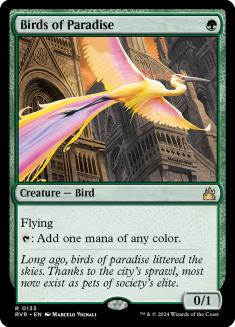
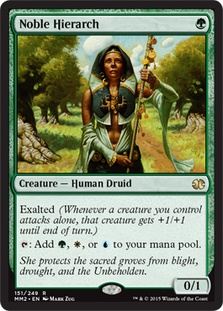
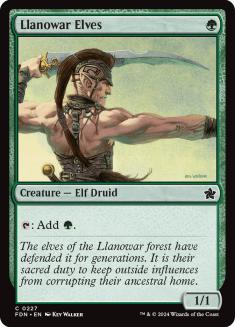
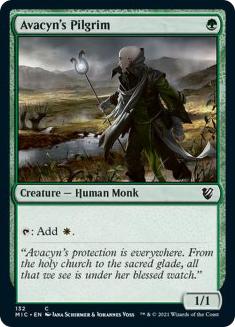


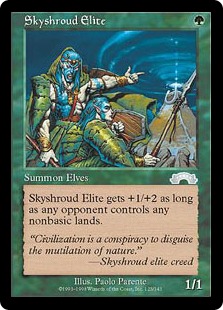
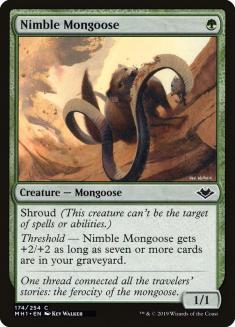
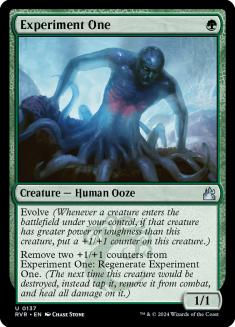

Much of green’s power in Cube lies in the five one-drop mana producers. All of these cards have been staples of whatever format they were legal in and give
green decks a huge leg up on whatever they are playing against. They work well in almost every possible deck type, and all have a slightly different
flavor. I’ve avoided the exact duplicates in Elvish Mystic, Fyndhorn Elves, and Boreal Druid as I think five is a very good number.
Aside from the mana creatures, there is also a trio of beatdown-oriented one-drops as well. Experiment One is very good, especially with the huge variety
of creature size in the Cube, while Skyshroud Elite is almost always a 2/3 due to a huge amount of non-basic lands in the Cube. Nimble Mongoose is the most
difficult to use but presents the highest upside.
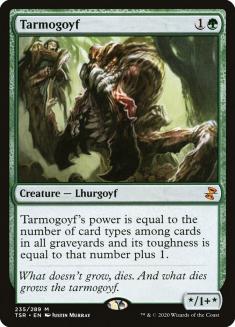

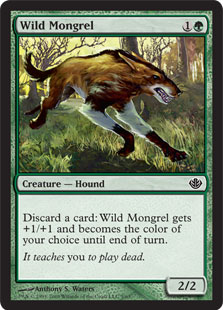
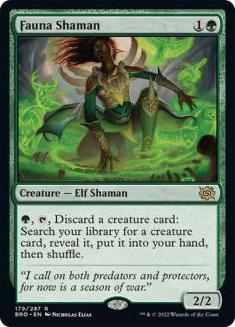


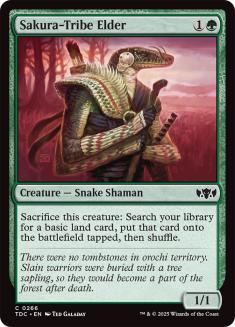
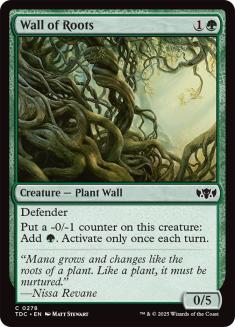
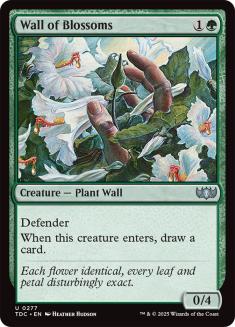
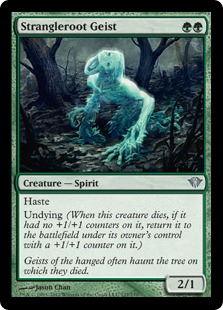
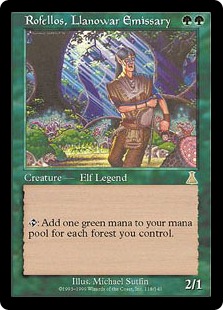

The green two-drops show the full spectrum of all that green is capable of. Tarmogoyf, Scavenging Ooze, and Strangleroot Geist show off the beatdown side
of the color with various bonuses, while Fauna Shaman and Wild Mongrel help out with graveyard synergies. Lotus Cobra and Rofellos, Llanowar Emissary are
great proactive mana producers, while there is a whole stable of good defensive cards in Sakura-Tribe Elder, Wall of Roots, and Wall of Blossoms, which can
help out ramp and combo decks.
It’s not hard to see how wide green’s range is in Cube looking at this section, as you are definitely not going to want all of these two-drops in
your deck; some will fit the bill, some won’t.
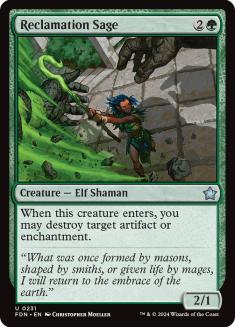
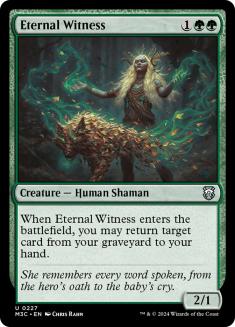
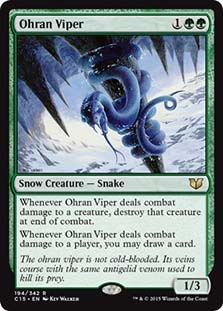

Things thin out a bit as we go up the mana costs. Reclamation Sage is an important card in a Cube, as there needs to be good, versatile answers to
difficult-to-answer permanents that can be maindecked.
Ohran Viper is a personal favorite, and a perfect example of a great Cube card. Some cards are really powerful, but just never really got to see their day
in the sun in Constructed for whatever reason – be it they never find the right deck or just happen to be a casualty of the format. Luckily, they get to
have their day in the Cube, and I’ve played quite a few turn 2 Ohran Vipers in my Cube to great effect.
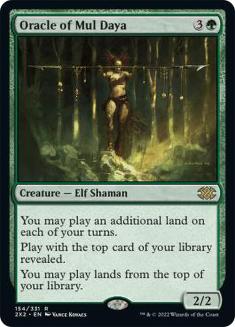
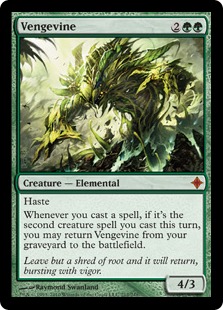

Just two four-drops, but they are both completely awesome.
Oracle of Mul Daya is an amazing ramp card that can also support a “Lands” style deck and has a ton of synergy with many of the cards in the Cube.
Vengevine is a fine beatdown creature, but it also can be put to great use in many ways with cards like Entomb and Survival of the Fittest.


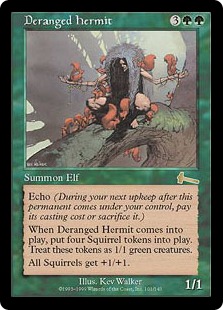
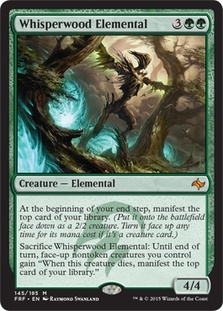

All of the green five-drops are heavy hitters, often providing more than one body for your opponent to deal with. Whisperwood Elemental’s manifests can
really be almost anything in Cube as well, which is pretty fun.
Genesis is the odd one out, and while it is a powerful and grindy card, its stock has fallen quite a bit over the years.

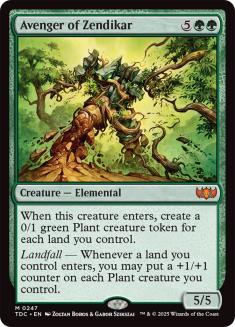
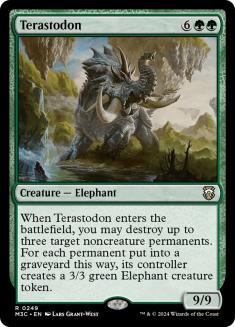
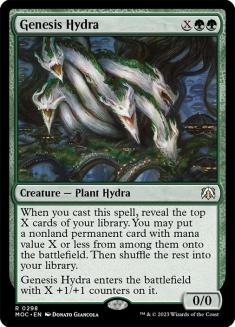

Green has the most six+ drops of any of the colors, which makes sense given that it is the color capable of producing the most mana quickly.
Primeval Titan is as good as it ever was in Cube, as there are a bevy of interesting lands it can go find. Avenger of Zendikar is just an absurdly powerful
finisher in any sort of ramp deck and is also fun to sneak into play as well, while Terastodon is one of the best creatures to cheat into play in the
entire Cube. Just casting it straight up is also a reasonable option. Lastly, Genesis Hydra gives green some extra card advantage on the top end.
Spells – 19

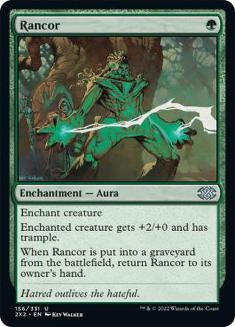
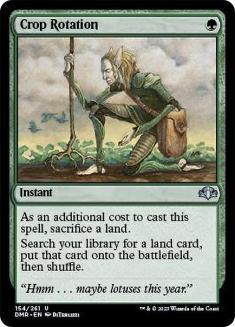

Fastbond is most certainly a broken Magic card, but it is much more difficult to use effectively in Cube than you would imagine. It really requires you to
commit to either a combo deck or a “Lands” style deck to get the most out of it.
Crop Rotation isn’t as powerful a tutor as what the other colors have access to, but it is still a powerful and useful effect, and Rancor is just a
beatdown staple.

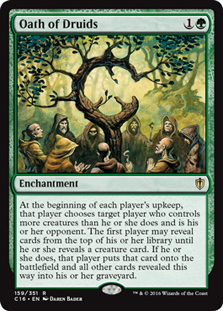
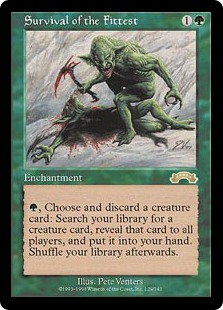

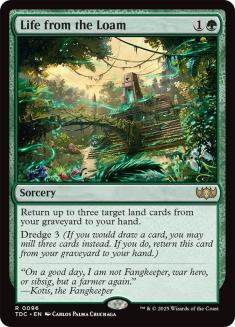
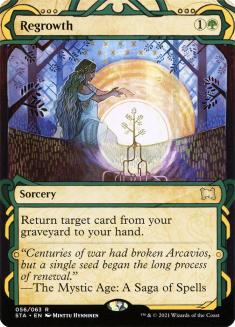
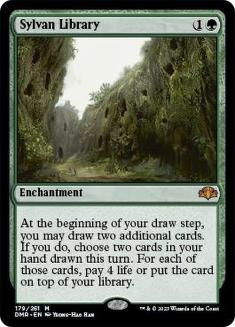
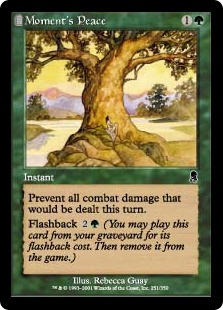

While in the other colors, the three-mana spell section is where many of the best cards are found, in green it is the two-mana spells.
Three of these seven cards are banned in Legacy, as Oath of Druids and Survival of the Fittest are both insanely powerful engine cards that want to be in
completely opposite decks. Regrowth is less exciting but still a powerful card.
Life from the Loam can do a lot of interesting things, while Explore is the two-mana ramp spell of choice, and Moment’s Peace can buy a ton of time for
combo or ramp decks. And, of course, Sylvan Library is just insane.
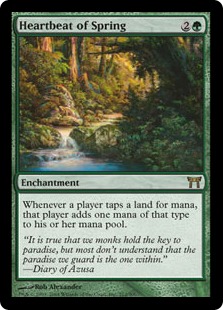

Heartbeat of Spring is the only three-mana spell in green, and it is a powerful card that works very well in creating the mana that the combo decks need to
go off. Knowing when to put a card like Heartbeat of Spring in your deck is the mark of a good Cube drafter.
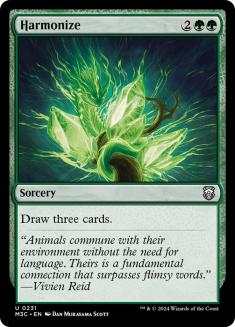
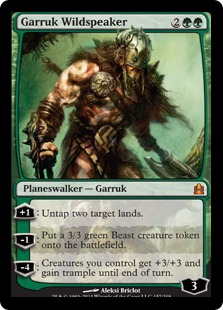

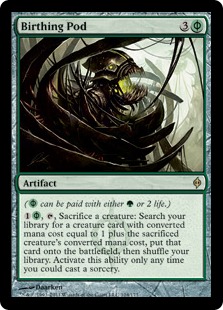

Not every card has to be super interesting, as sometimes you just wanna draw three cards with Harmonize. The other cards in this section require a bit more
explanation, however.
Garruk Wildspeaker is the green planeswalker of choice, as he does very good things for a number of different decks; for green aggressive decks, he
provides an overrun and reach, for ramp decks he provides a ramp spell and a threat, and for combo decks he provides an Early Harvest-type effect to help
create critical mass. No other green planeswalker can provide so many different things to different decks, so the OG Garruk gets the nod.
Eureka is considered by some to be a trap card and was one of the cards most often seen in losing Cube draft decks on Magic Online. However, my Cube is
much more streamlined than the Magic Online Cube, with tighter themes and more tutors. There’s no denying Eureka’s power level, and it can do some
absolutely filthy things in my Cube if it is utilized correctly.
Birthing Pod is a card that all Modern and Standard players should be familiar with and is a powerful card that creates a very interesting puzzle for
drafters while they are putting their decks together.
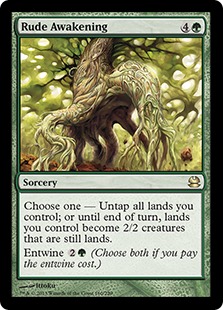


While Rude Awakening can be used as a big-mana finisher when entwined, its primary purpose is as the best Early Harvest effect available for the Cube. Plow
Under is a great disruption spell in a color that often doesn’t get them.
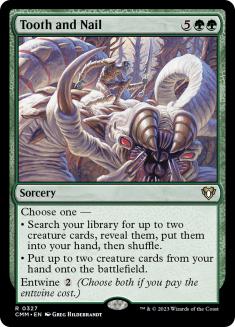
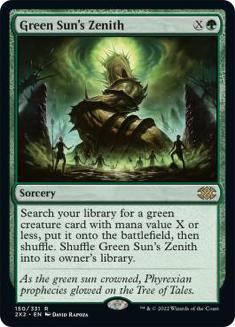

Tooth and Nail is the ‘fair’ Show and Tell, as paying nine mana to entwine Tooth and Nail is tough but often game-ending. Green Sun’s Zenith is just a
great card, and it provides another tutor effect for the green decks.
Notable Omissions
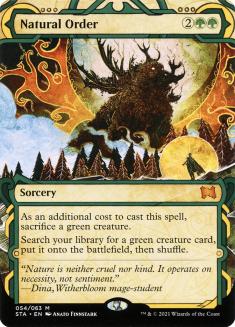
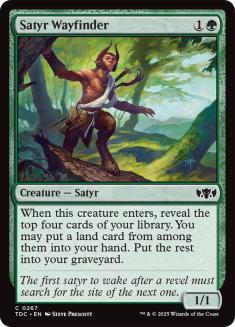
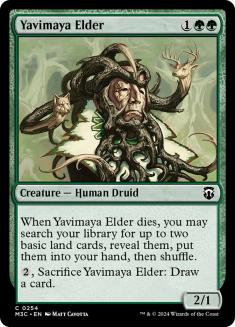

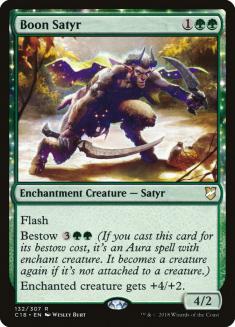

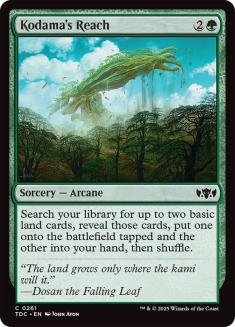
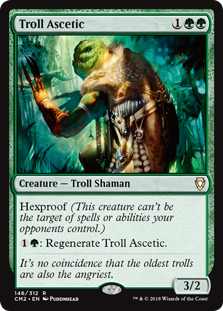
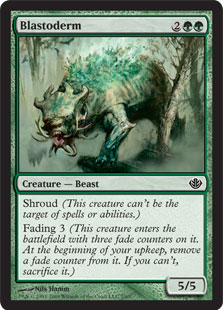
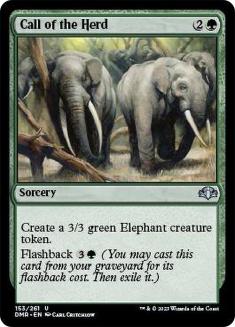
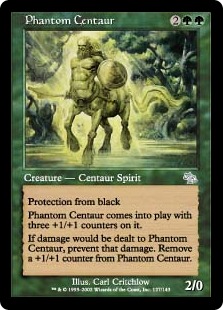

Like the other sections, many of the notable omissions from the green section are three and four mana cards that are just too clunky and unwieldy to be
reliable. Cards like Blastoderm, Call of the Herd, Troll Ascetic, and Yavimaya Elder are cool, but they just clunk things up too much.
Natural Order is a tough one, as I like the effect, but it has no real backbreaker targets; I don’t want to put a Progenitus into the Cube that basically
only serves the purpose of being a Natural Order target. Phantom Centaur is also a totally awesome card, but again, I am very against random protection
effects in the Cube.
Multicolor – 65 Cards
This is where things get both interesting and complicated. While each of the colors has a number of interesting choices, things start to get super muddy in
the multicolored, artifact, and land sections where things aren’t so clear.
The difficulty of course, lies in hybrid cards (which are actually much easier to cast than mono-colored cards) and in mono-colored cards with multicolor
leanings (which are sometimes playable if you are only one of the card’s colors). While the hybrid cards and pseudo-multicolor cards are often somewhat
flexible, the true multicolor ‘gold’ cards are actually very restrictive. Too many multicolor cards puts way too much pressure on your drafters to be more
than two colors so they can play all the good cards they see.
While there are six cards for each color pair, the goal is to have between three and four actual multicolored cards and between two and three
hybrid/pseudo-multicolor cards.
Selesnya – 6 Cards

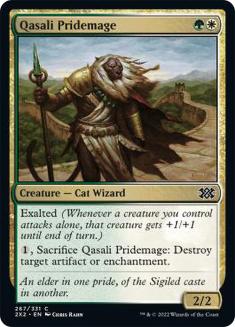
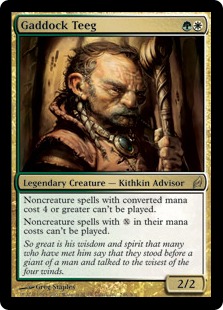
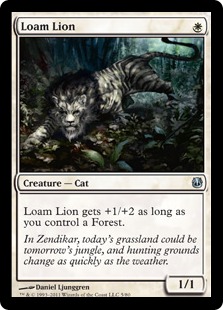
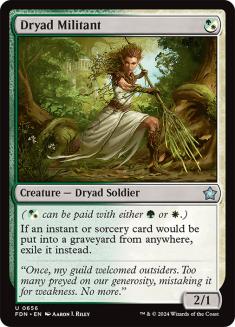
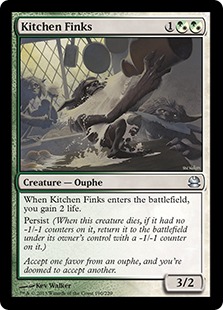

Selesnya is the most difficult multicolor section, as there are just so many good options.
Knight of the Reliquary is an awesome card that can also tutor lands and is a no brainer, while Qasali Pridemage is the perfect Cube card- a quick
efficient beater that answers difficult to answer cards incidentally. Gaddock Teeg is a bit more unorthodox, but it is a great card for green/white decks
to use to fight back against control and combo decks. While it doesn’t contain a green mana symbol, Loam Lion is for all intents and purposes a gold card,
as you are almost never going to play it in a non-green deck.
Our two non-multicolored cards are Kitchen Finks and Dryad Militant, which don’t require much explanation. Dryad Militant is nice as it gives both green
and white an extra one-drop with some upside.
Gruul – 6 Cards
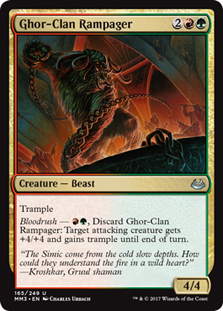
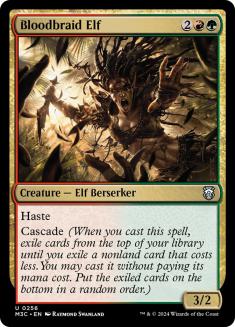
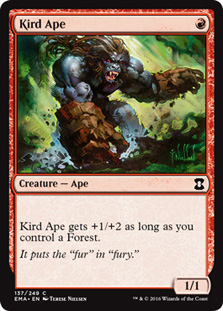
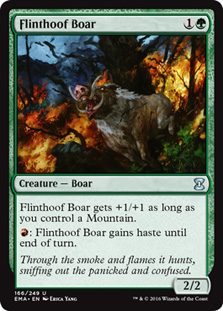
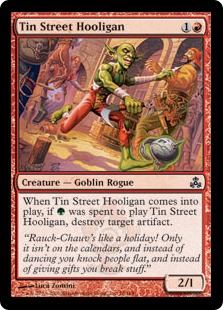
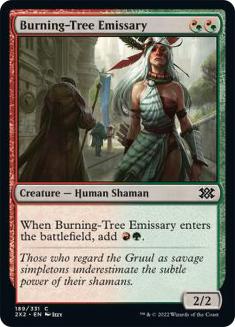

The Gruul section brings the beats, as pretty much every card has a very aggressive slant.
Bloodbraid Elf, Kird Ape, and Flinthoof Boar really need no introduction, and Ghor-Clan Rampager adds a much wanted pump spell to the Cube. Tin-Street
Hooligan is unassuming but very potent and actually one of the best cards in the section. Burning-Tree Emissary provides some lightning quick starts and
some fun interactions.
Rakdos – 6 Cards
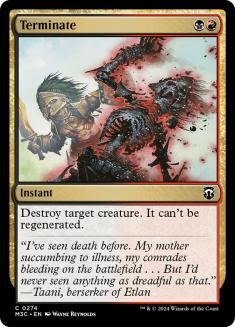
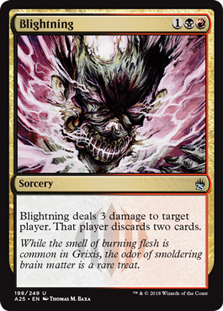
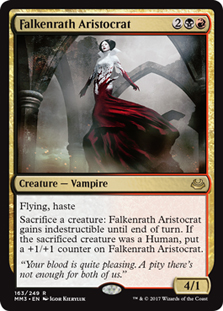
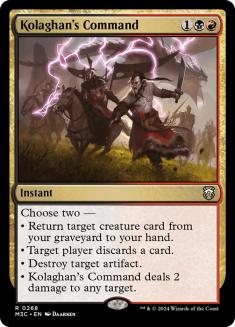
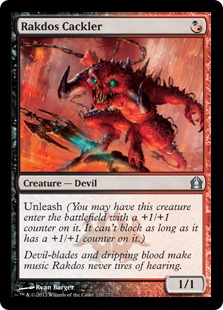
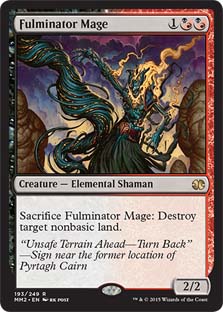

Rakdos features three excellent spells in Terminate, Blightning, and Kolaghan’s Command. Kolaghan’s Command has shown up in Modern and Legacy lately and is
another great example of a powerful card that just hasn’t really found a home in Standard. Hitting artifacts is also extremely relevant in my Cube. The
multicolor cards are topped off with the absurd Falkenrath Aristocrat.
Rakdos Cackler and Fulminator Mage round out the hybrid cards and fit well in red/x or black/x decks as well as Rakdos decks.
Dimir – 6 Cards
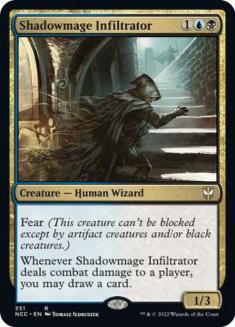
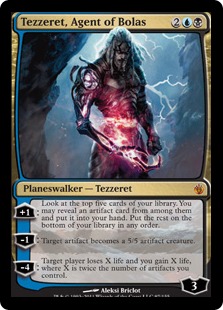
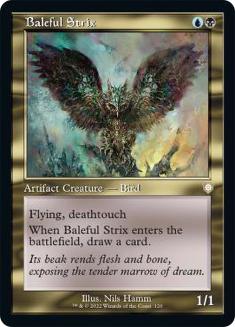

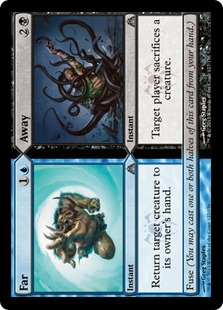
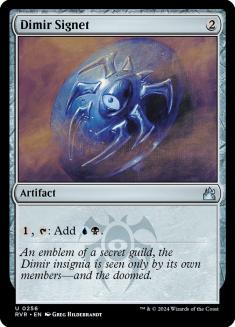

While most of the sections so far were pretty self-explanatory, Dimir has a lot of things going on. Sure Shadowmage Infiltrator and Baleful Strix sell
themselves, and Far // Away makes sense as a pseudo-hybrid card, but what about the others?
Tezzeret, Agent of Bolas is an awesome planeswalker that is fantastic with the artifact theme, without being overly powerful otherwise. Lim-Dul’s Vault is
an obscure old card that is essentially a two mana Vampiric Tutor and is great for any combo deck.
The biggest issue, however, is right here:
A big question Cube designers have to ask themselves is “to signet or not to signet?” Signets were extremely powerful when Cubing was in its infancy many
years ago, to the point of people considering them almost oppressive and cutting them. Signets really promoted midrange strategies and made it so decks
could get a leg up on aggressive strategies by dropping their four- and five-drops earlier.
I’ve taken the middle road.
Because so many powerful cards have been printed over the years, signets are no longer the force they once were. Frankly, some color combinations really
don’t even want the effect. The overall curve of my Cube being so low also makes them much less necessary or format-warping.
As such, because they are still powerful for some decks and very important for the artifact theme, I have chosen to include five of the ten signets, in
colors that they make the most sense. Signets fit into the hybrid/pseudo-multicolor slots because they are definitely playable in a deck that only features
one of the colors.
Azorius – 6 Cards
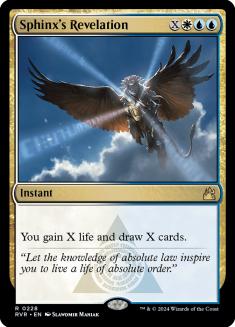
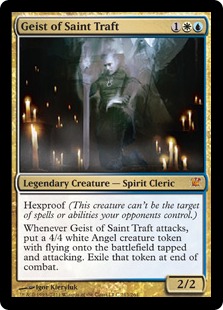
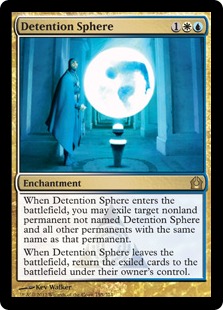
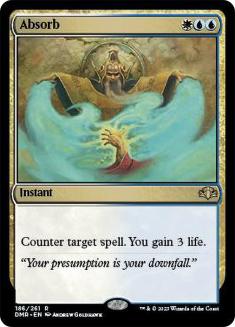
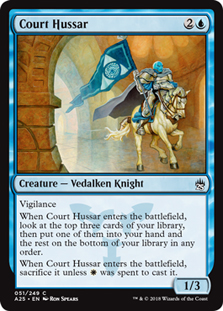
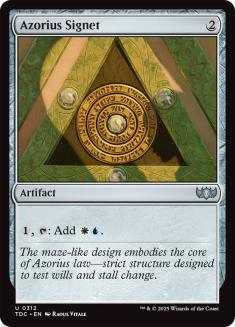

More absurdly powerful gold cards. The only issue at the moment is that Dragonlord Ojutai is currently not in, but I’m not really that comfortable with
cutting any of the four gold cards. I’m also not sure how good Ojutai will be without his support cards.
It’s nice that Detention Sphere can answer tokens really well and that Absorb gives blue another hard counterspell, as there aren’t a lot of those in the
Cube.
Court Hussar is an awesome card for midrange or control decks, and is reasonable enough as just a blue card.
Izzet – 6 Cards
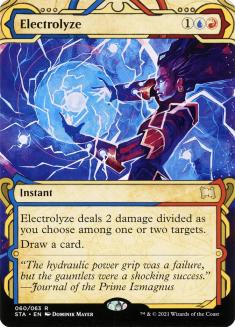
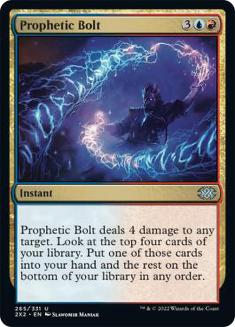
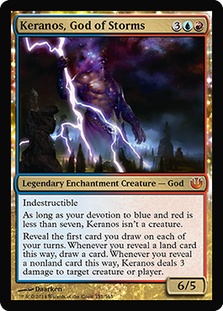
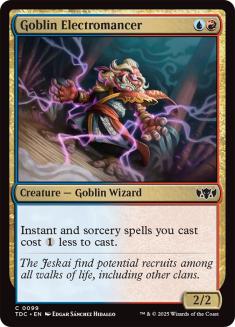

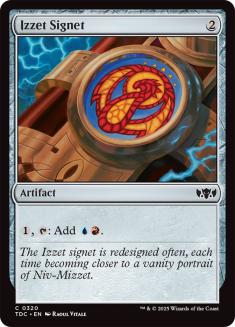

Izzet gives us a bunch of awesome spells, as Electrolyze, Fire//Ice, and Prophetic Bolt are all sweet. Keranos, God of Storms has seen some Legacy play and
is a fine finisher, while Goblin Electromancer is a great card for blue/red tempo decks or for combo decks.
Boros – 6 Cards
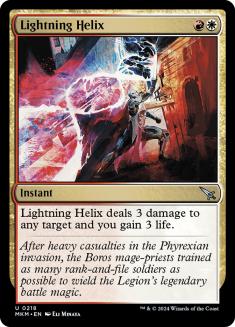

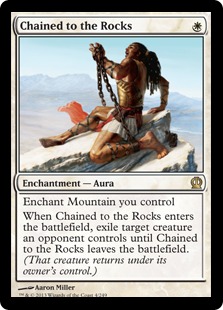
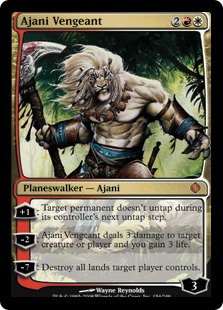

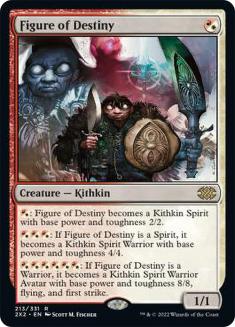

Lightning Helix and Boros Charm need no introduction, and Chained to the Rocks is very similar to Kird Ape in Gruul. We have another planeswalker sighting
in Ajani Vengeant, who deepens what Boros can do by being a reasonable aggressive card but also a very solid control card.
Hybridwise we have Boros Reckoner and Figure of Destiny. One of the great benefits of the hybrid mana costs are that they add more awesome one-drops to the
Cube.
Orzhov – 6 Cards
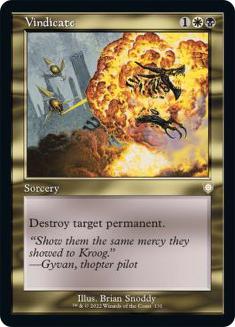
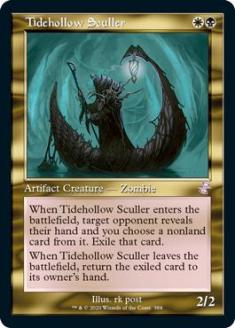
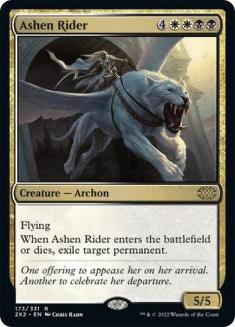
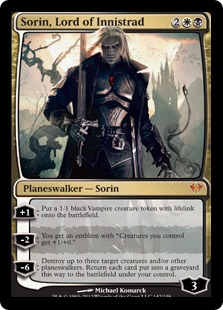
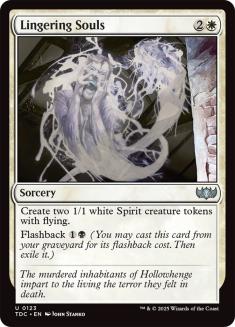
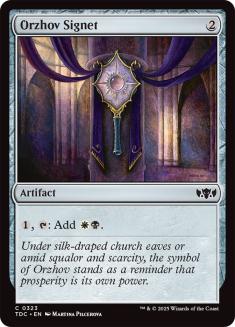

More quality in Vindicate and Tidehollow Sculler, with the latter supporting the artifact theme. Ashen Rider gives us a great reanimation/cheat-into-play
target, and Sorin, Lord of Innistrad is an extremely powerful card for token decks while also being solid on its own.
Lingering Souls fits in the hybrid slot, as you can play it without black, but you really don’t want to. Orzhov also gets the only non-blue signet in the
Cube, as black, white, and blue are the most important artifact colors and black/white is a reasonable control color combination.
Golgari – 6 Cards
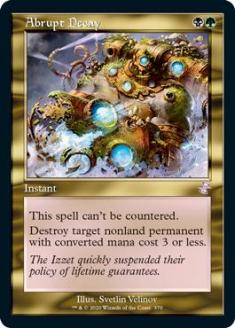
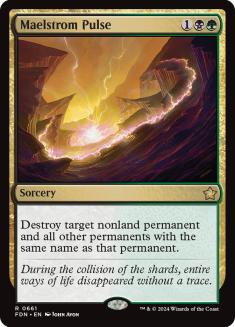
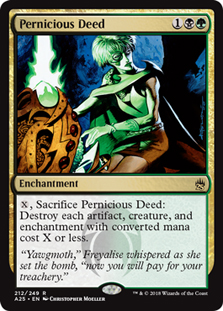
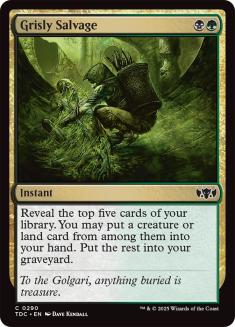
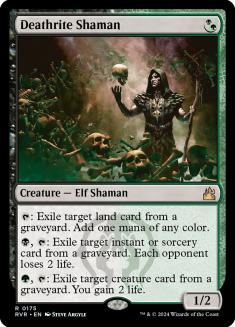
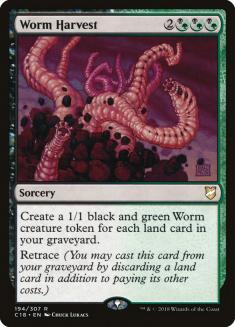

Abrupt Decay, Maelstrom Pulse, and Pernicious Deed really need no introduction. One of the great benefits of the multicolor section is that it provides
many decks with the utility and removal spells that they need at a high power level.
Grisly Salvage is a nice Impulse effect that also is great in any sort of graveyard deck, as are both hybrid cards in Deathrite Shaman and Worm Harvest.
Worm Harvest is certainly a niche card, but it’s also an interesting one. The decks that want Worm Harvest are going to really want it and can probably do
some cool things with it.
Simic – 6 Cards
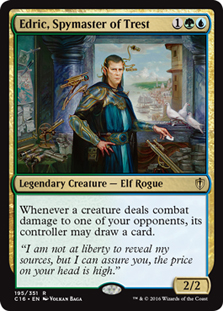
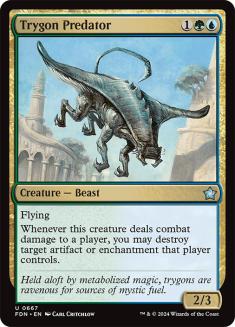
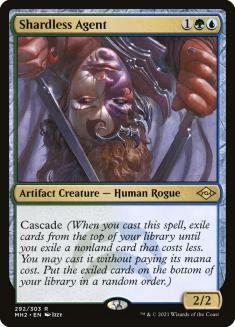

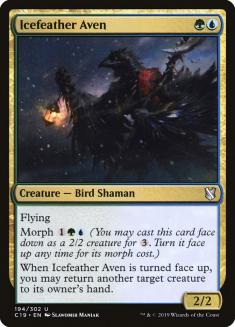
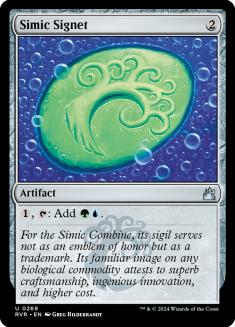

Simic has always been a problem, as there simply aren’t enough good Simic cards to fill a section, and there are almost no reasonable
hybrid/pseudo-multicolor options.
The key three are Edric, Spymaster of Trest, Trygon Predator, and Shardless Agent, as they are all awesome and powerful cards. The drop off is considerable
however, as cards like Mystic Snake and friends are just too clunky to be reasonable.
To this end, I’ve decided to support a mini-morph theme in Simic, which branches out a bit into the other colors. Both Sagu Mauler and Icefeather Aven are
reasonable cards, with the former not being embarrassing in reanimator decks and the latter a fair aggressive two-drop. Because they can morph, they are a
bit easier to play/splash, which helps them fit into the pseudo-multicolor camp.
Bonus – 5 Cards
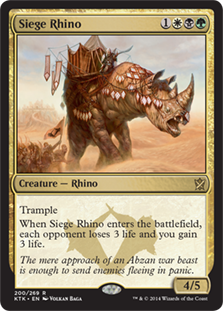
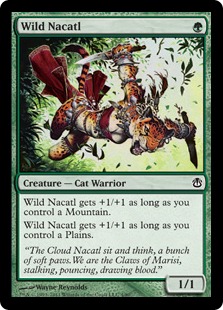
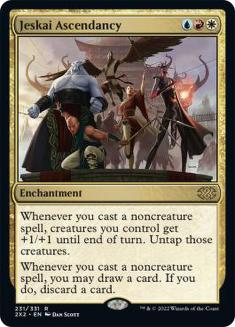
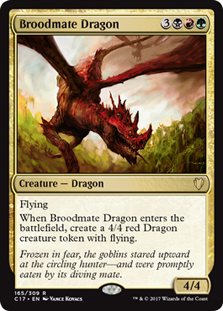
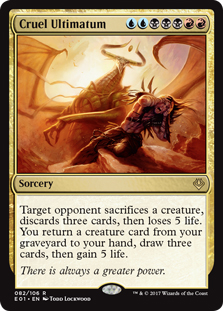

The last part of the multicolor section is essentially the bonus round. I have no interest in having a multicolor card for each shard/clan, as that’s just
far too many, and some entries would be quite weak.
However, there are some sweet three-color cards available, so I’ve chosen only the very best and most interesting. Yes, sometimes these end up as the last
card in the pack because nobody can reasonably cast them, but they are all powerful and fun enough to be worth it.
Each of these cards has been a format-defining card at some point or another, and all do a great job at promoting whatever deck type they will be played
in.
Notable Omissions
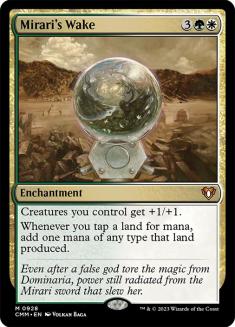
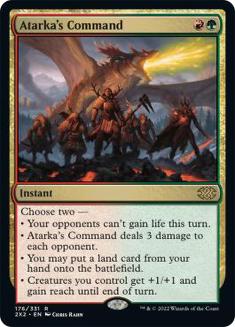
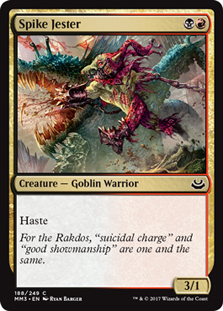
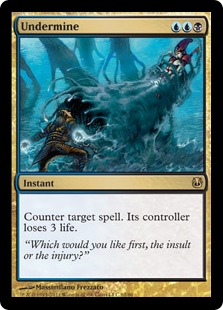
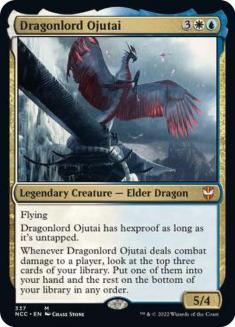

There are an absurd amount of reasonable cards that can be put into the multicolor section, but it’s very important to show restraint. Too many multicolor
cards throws the Cube off, as you never want to force players to play three+ colors; they should feel they can actually play the cards they draft.
Part 6
Next week we wrap up with the colorless cards and the lands, and I will at last post the Google doc of the full Cube list!

